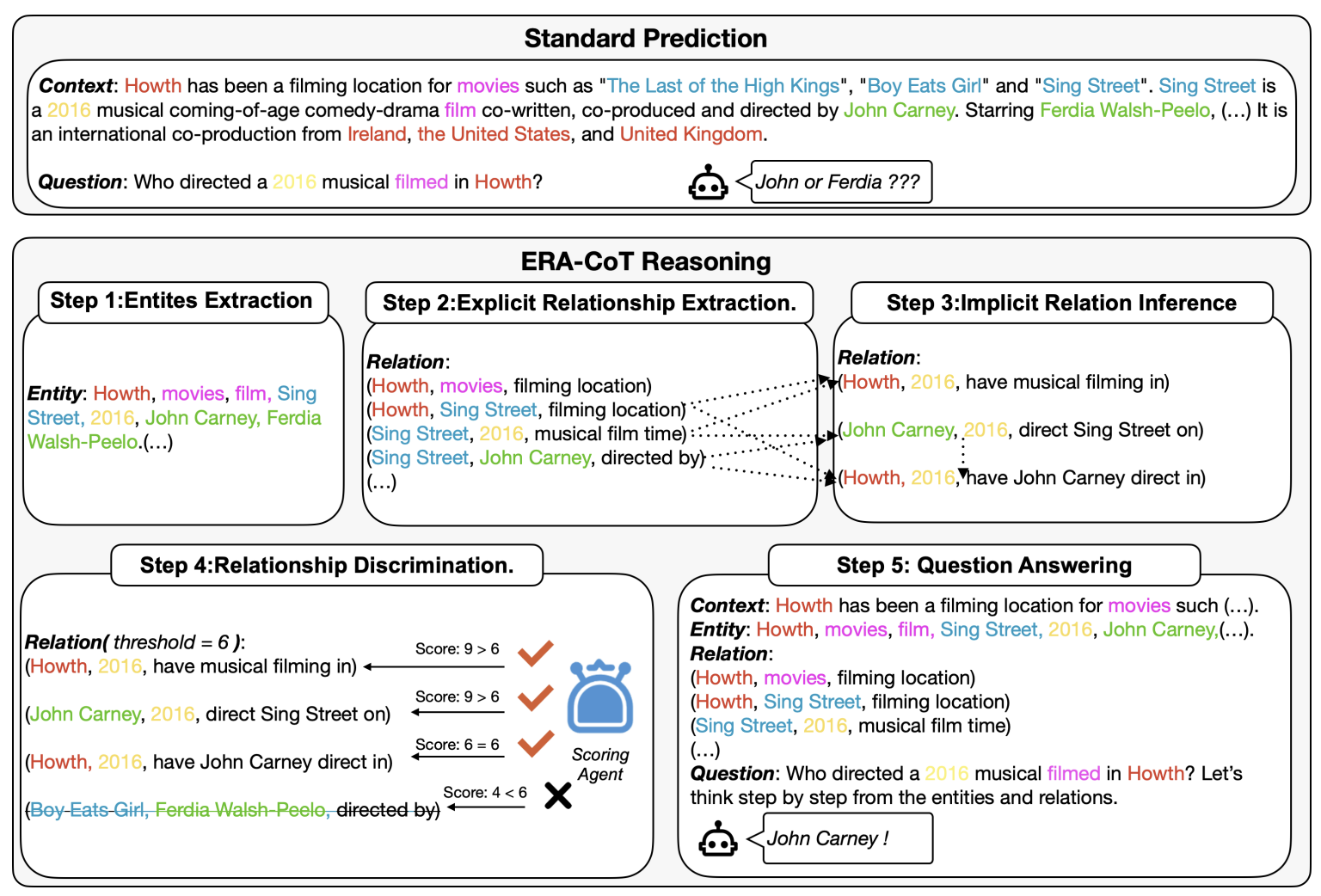This is the codebase of the paper: ERA-CoT: Improving Chain-of-Thought through Entity Relationship Analysis.
[2024/07/12]🔥 We are releasing the version 1.1 for running on GPT3.5 model.
[2024/05/17]🔥 We are happy to announce ERA-CoT has been accepted to ACL 2024 main conference!
[2024/03/28]🔥 We are releasing the version 1.0 for running on Llama2 model.
Update your environment for the required dependency.
pip install -r requirement.txtGet your Llama2 weight on https://huggingface.co/meta-llama/Llama-2-7b-chat-hf/tree/main, set up on default directory: /root/llama-2-7b-chat-hf (You can change the dir on era-cot/config.py)
Running the code on Llama2:
export PYTHONPATH=./
python main.py --dataset CommonsenseQA \
--engine llama2-7b \
--temperature 0.3 \Running the code on GPT3.5:
export OPENAI_KEY=""
export PYTHONPATH=./
python main.py --dataset CommonsenseQA \
--engine gpt-3.5 \
--temperature 0.3 \
--api_key $OPENAI_KEY \-
Upload your json version of dataset on era-cot/dataset.
-
Setting for loading your dataset on utils.
if args.dataset.lower() == 'commonsenseqa':
json_res = decoder.raw_decode(line)[0]
choice = "Answer Choices:"
for c in json_res["question"]["choices"]:
choice += " ("
choice += c["label"]
choice += ") "
choice += c["text"]
q = json_res["question"]["stem"].strip() + " " + choice
a = json_res["answerKey"]
id = 'temp_{}'.format(idx)
questions.append(q)
answers.append(a)
ids.append(id)✨ERA-CoT
- Entity extraction on text and finds out all the explicit relationships mentioned in the text.
- Gradually infers the possible implicit relationships involved between entities based on the explicit relationships.
- Scores and filters the reliability of these implicit relationships.
- Finally answers questions based on these entity relationships.
If you found that ERA-CoT helps your work, please cite:
@inproceedings{liu-etal-2024-era,
title = "{ERA}-{C}o{T}: Improving Chain-of-Thought through Entity Relationship Analysis",
author = "Liu, Yanming and
Peng, Xinyue and
Du, Tianyu and
Yin, Jianwei and
Liu, Weihao and
Zhang, Xuhong",
editor = "Ku, Lun-Wei and
Martins, Andre and
Srikumar, Vivek",
booktitle = "Proceedings of the 62nd Annual Meeting of the Association for Computational Linguistics (Volume 1: Long Papers)",
month = aug,
year = "2024",
address = "Bangkok, Thailand",
publisher = "Association for Computational Linguistics",
url = "https://aclanthology.org/2024.acl-long.476",
pages = "8780--8794",
abstract = "Large language models (LLMs) have achieved commendable accomplishments in various natural language processing tasks. However, LLMs still encounter significant challenges when dealing with complex scenarios involving multiple entities. These challenges arise from the presence of implicit relationships that demand multi-step reasoning. In this paper, we propose a novel approach ERA-CoT, which aids LLMs in understanding context by capturing relationships between entities and supports the reasoning of diverse tasks through Chain-of-Thoughts (CoT).Experimental results show that ERA-CoT demonstrates the superior performance of our proposed method compared to current CoT prompting methods, achieving a significant improvement of an average of 5.1{\%} on GPT3.5 compared to previous SOTA baselines. Our analysis indicates that ERA-CoT increases the LLM{'}s understanding of entity relationships, significantly improves the accuracy of question answering, and enhances the reasoning ability of LLMs.",
}
For academic and non-commercial use only.The whole project is under the CC-BY-NC 4.0 license. See LICENSE for additional details.




